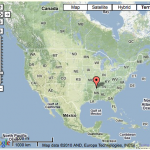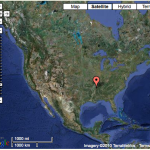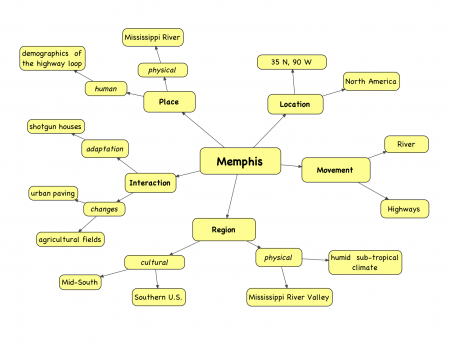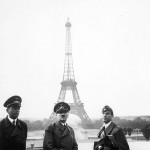[googleMap name=”Memphis, TN” description=”35 N, 90 W” width=”480″ height=”400″ mapzoom=”1″ mousewheel=”false” directions_to=”false”]35, -90[/googleMap]
Google Maps are a great tool for introducing the five themes of geography because it allows you, as you zoom-in from a distance, to observe things in different ways. The different views, terrain, satellite, map, offer a nice introduction to Geographic Information Systems (GIS) layers; GIS is one of the most powerful technological developments of the information revolution and we’ll be hearing a lot more about it in the next year or so as the political parties try to gerrymander congressional districts into more favorable boundaries.
If you start zoomed out all the way, like in the map above, you get to see your location from a global perspective. Note that if you sign up to the google maps site itself, instead of embedding the map like I have it here, you can select an option so that the cursor shows the latitude and longitude. The largest scale view is best for talking about hemispheres and latitude and longitude. Even better would be to use Google Earth which will show the world as a sphere.


Zooming in a couple times will begin to highlight features of topography and land surface cover, two important physical components of space. Both the terrain and satellite views show this, but sometimes one works better than another so this is a good time to switch back and forth between the two and mention that this is GIS. Looking at North America, the satellite view shows the Rocky Mountain region quite nicely, while the terrain view shows the climatic gradient from the snowy northern Canada to the green Gulf Coast.


Switching to map view and zooming in a little more, the highway network and to some degree the river networks become more apparent. Google Maps is designed for general use so there’s no easy way to emphasize the importance of the river networks and ocean ports without pointing it out yourself.

As you get down to the scale of the city itself, a little of the human geography of place becomes visible if you know what you’re looking for. In the case of Memphis, as well as a lot of other cities, the loop highways don’t just direct highway traffic around the city but separates the city itself from its suburbs. There are often significant class, racial and other demographic differences between the populations living within the loop and those outside.

At a scale that covers both the city and its surroundings, the satellite view nicely shows the effects of development on the urban, undeveloped and agricultural environments. In the Memphis region (see the image directly above), the Mississippi River separates the flat, lowland, agricultural floodplains of Arkansas in the west, from the urban and suburban development atop the river bluff to the east; the difference is strikingly obvious. You may also notice the tree lined channels of the east-west flowing tributaries to the Mississippi. They’re relatively narrow but the dark green of the trees are a striking contrast to the light colored concrete and asphalt of the rest of the city.
[googleMap name=”River port” description=”River port” width=”490″ height=”400″ mapzoom=”15″ mousewheel=”false” directions_to=”false”]35.0895, -90.106[/googleMap]
You can use the closer view (especially if you switch the map above to satellite view) to point out the importance of water transportation in most cities by focusing on the port. The railyards are also good to look at because all the material they transport they tend to be hidden away despite their sheer volume.

Finally, the street view lets you take a look as some of the ways people adapt to the environment. To truly understand adaptations you really need to contrast different places, which is why the small groups are asked to do this type of analysis for different cities around the world, but if you’re giving a lesson and know what to look for the street view can be a nice introduction. In Memphis, apart from the very southern style of many buildings, we have the shotgun houses that are long and narrow, with front and back doors lined up to permit air flow in the hot humid summers.
So to sum it all up, I’ve put together this graphic organizer for the five themes of geography for Memphis. It’s not complete of course, but it should have all the examples mentioned in this post. I’ve asked all of my groups to include a similar graphic organizer in their presentation to help pull everything together. We’ll see how it goes.














